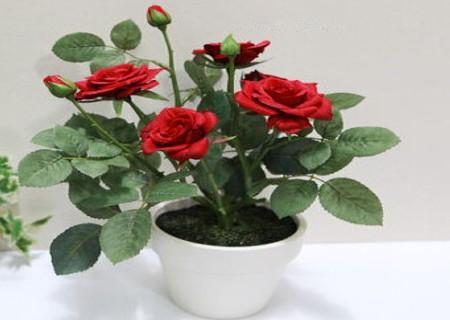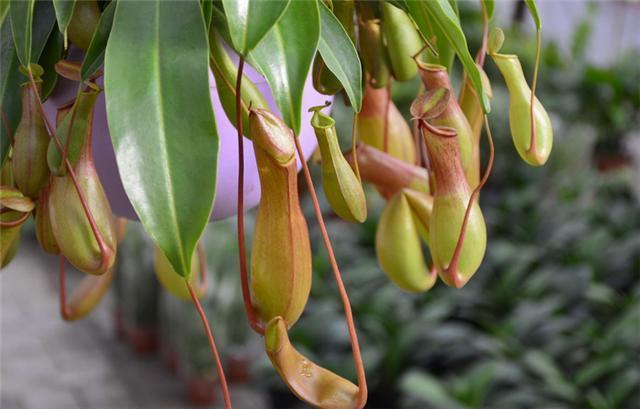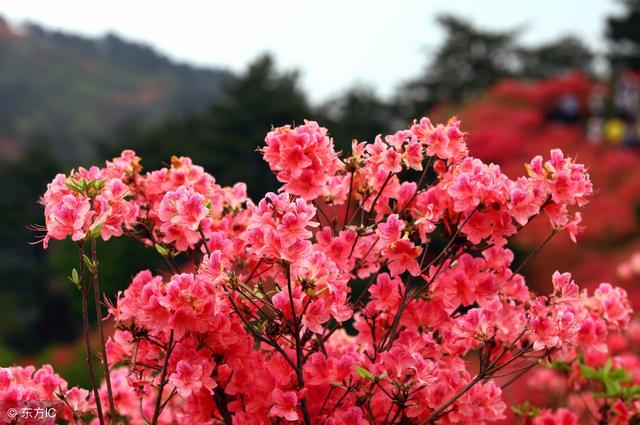How to raise roses that are picked back
How to plant potted roses
Ross is the messenger of love and the heir of emotion. Every girl likes to receive roses from a loved one. It is not only a kind of love, but also a kind of happy enjoyment. Therefore, roses often play an important role in our lives. If you can't express your love in words, then you can use roses to help you convey your love, not only romantic, but also warm!

Roses have won the praise of many people because their perfume, especially red roses, is very popular. The key to the success of potted roses is to master the planting method. So how do you plant potted roses? Today, the editor will share with you how to plant potted roses.
First, the preparation of potted soil
Potted roses, like soil, are loose and well drained. I recommend several soil matching schemes here: 7 kinds of waste soil mixed with 3 kinds of river sand, 6 kinds of dry river sand and 4 briquettes cinder, 7 kinds of garden soil, 2 kinds of honeycomb cinder and 1 kind of river sand. These are good pollution schemes.
Second, basin time
The transplanting time of potted rose seedlings should be chosen before early winter leaves or spring germination, because for most potted plants, the survival rate in this season is higher than in other seasons, as well as roses.
Third, the process of transplantation
Roses propagate through cuttings. After about a month, new seedlings can be planted and transplanted in a year's time. When transplanting, first relax the soil around the seedlings, be careful not to destroy the roots of the plants, then take them out with some old soil, and then plant them in a new basin. Rose seedlings in the old soil are more likely to survive.
Fourth, watering in time
Watering is the most commonly used method for flower growers in the management process. Watering must be determined according to the dry and wet conditions of the soil. Usually, the principle of hydration is to "see dry and wet pouring", but avoid the water in the basin, otherwise it will lead to rotten roots and affect growth.
5. Moderate fertilization
As the nutrients in the potted soil are limited, it is necessary to add some nutrients to the potted plants at an appropriate time, generally using fertilization and topdressing, and a more appropriate ratio of nitrogen, phosphorus and potassium is a scientific and reasonable compound fertilizer. When applying fertilizer, first loosen the soil, then bury the fertilizer in the potted soil and cover the soil. Then pour in enough water to dissolve and dilute the fertilizer, which is more conducive to the full absorption of plants.
Sixth, pruning and plastic surgery
In order to maintain the good posture of potted roses, we need to prune them frequently. Generally speaking, we cut off thick branches, flowers, and weak branches so that we can maintain beautiful shapes and the number of plants. Bloom and open high-quality flowers. Picking flowers is very important. If there is no proper cleaning after flowering, you will only have one flower.
Seventh, replace the basin at the right time
Potted roses usually need to be replaced every year to change the soil. When changing the flowerpot, the root should be properly rooted and the root of the coil should be cut. This is more conducive to plant growth, and flowers bloom more beautiful and larger. Higher.
Note:
1. The planting time of potted roses should be chosen after the leaves fall in early winter or before germination in early spring.
2. Water and fertilizer management is very important, watering should be determined according to weather conditions and soil dry and wet conditions; fertilization is usually applied with a thin and completely decomposed layer of organic liquid fertilizer about every 10 days after putting into the pot.
3. After plants enter the dormant state, they should be pruned in time. After flowering, the remaining flowers should be removed in time to ensure that the plants grow more luxuriantly and prolong the flowering period.
How to raise a bouquet of roses
Sometimes we receive a bouquet of roses and always want it to bloom longer. What measures should be taken?
Rose is an important cut flower. Its flowers are beautiful and can secrete phytofungicides, which is beneficial to people's health. After receiving the rose bouquet, it is usually inserted into a water vase to prolong the flowering period. The practice is very simple, mainly focusing on several aspects.
1. First, prepare insertable vases or other containers according to the size of the bouquet. The mouth of the bottle should not be too small, so as not to tighten the bouquet and affect the ventilation in the bottle. Don't be too big. Let the bouquet stand upright and tight.
two。 Choose water, use mineral water or tap water, do not use pure water. Pure water does not contain minerals and does not provide nutrition for bouquets. The other water is clean and free from pollution.
3. Add some preservatives to the water, or use 4000 times potassium permanganate or 3000 times aspirin to prepare simple preservatives, which can prolong the fresh-keeping time of roses. In addition, a small amount of sugar or vitamin C or salt can be added to increase nutrition, and the flowering period must be prolonged appropriately.
4. Separate the bouquet and remove the damage from the upper part of the stem. Then cut the leaves at the bottom of the bouquet to avoid soaking them in water.
5. Place the end of the bouquet on the flame for 2 to 3 minutes, treat the cut, cut the bottom of the branch into a slope of about 3cm, or crush it into parts to increase water absorption. Area, extend the life of flower arrangement, rinse with clean water and insert into the bottle. There must be no incision in the water.
6. Keep the bouquet in a mild, warm place to avoid direct sunlight; don't get too close to the heater or stove in winter. Otherwise, it will accelerate the respiration of the flowers and the evaporation of water, and make the flowers wither easily.
7, we should pay attention to flower arrangement can not be placed near bananas, apples and other fruits, these fruits will release ethylene, ripe bouquets, causing bouquets of thanks.
8, it is better to change the water every 2 to 3 days, and an appropriate amount of potassium permanganate or aspirin or salt is still added to the water. If the incision is rotten, the incision should be replaced. In summer, bouquets can be sprayed, humidified and cooled, but not too much at a time.
How to raise roses is enough.
First, how to prepare the soil for planting roses
The soil should be disinfected before planting roses, mainly by steam sterilization, unconditionally drying the soil, or disinfecting with disinfectants. After soil disinfection, eggs will be reduced, which can reduce the chance of infection and improve the survival rate of roses.
Second, the pot technique of roses.
The upper basin of the rose is not buried too deep in the soil, and the plant will not fall. Some paving stones can be placed in the basin to prevent direct contact between the soil and rose leaves and to reduce rose mortality.
Third, the fertilization methods of roses.
Fertilization can be carried out twice. Once it is over in autumn, after another flower, farm manure or fertilizer can be embedded in loose soil, and diammonium phosphate or other compound fertilizer can be applied.
Fourth, prune roses
The growth of roses is strong. If not pruned in time, the growth of branches is usually caused by the slender plant. Pruning should be carried out according to plant age, growth status and fertilizer and water management conditions. The principles of sparse shearing and shortcuts should be adopted to realize the old branches of plants, which are not dense and light ventilated. Old branches that have been more than 5 years old should be removed in time to support the development of new branches. For roses that have lost the ability to blossom in a weak state, they can be cut and promoted.
5. Pest control of rose
The main diseases of roses are rust, powdery mildew and brown spot. Rust can be removed and disease buds can be removed. In rust, powdery mildew, brown spot, and once every half a month before the onset of brown spot, it is beneficial to prevent the spread of the disease by spraying powder rust, fungicides or chlorothalonil. The main pests of roses are beetles, moths, red spiders, aphids, scales and beetles. Beetles and pocket moths mainly damage the twigs and leaves of roses, and can spray phoxim and enemies when they occur; red spiders, mites and scales mainly absorb rose juice, causing growth and weakness, and can spray dimethoate and monocrotophos. The system is controlled by internal insecticides; beetles are destructive pests and their adult plants should be killed and their favorite nutritious plants should be removed to inhibit their occurrence.
Time: 2019-05-14 Click:
- Prev

How does Nepenthes grow?
How to raise a pitcher plant, you have to understand this method, so that you forget trouble A lot of times we say if there is a good idea, but everyone is listening to its story, few people see the real forget me. In fact, forget me not is a pitcher plant sold in flower markets.
- Next

How to cultivate wild Yingshan safflower
How to cultivate azaleas? Five cultivation techniques of rhododendron is the provincial flower in many areas. It has high ornamental value. It can be planted in the garden or in the garden. Here are five breeding techniques for rhododendron, which can be seen by those who like flowers and plants. First of all, azaleas can be kept at home / can be blocked.
Related
- Fuxing push coffee new agricultural production and marketing class: lack of small-scale processing plants
- Jujube rice field leisure farm deep ploughing Yilan for five years to create a space for organic food and play
- Nongyu Farm-A trial of organic papaya for brave women with advanced technology
- Four points for attention in the prevention and control of diseases and insect pests of edible fungi
- How to add nutrient solution to Edible Fungi
- Is there any good way to control edible fungus mites?
- Open Inoculation Technology of Edible Fungi
- Is there any clever way to use fertilizer for edible fungus in winter?
- What agents are used to kill the pathogens of edible fungi in the mushroom shed?
- Rapid drying of Edible Fungi

